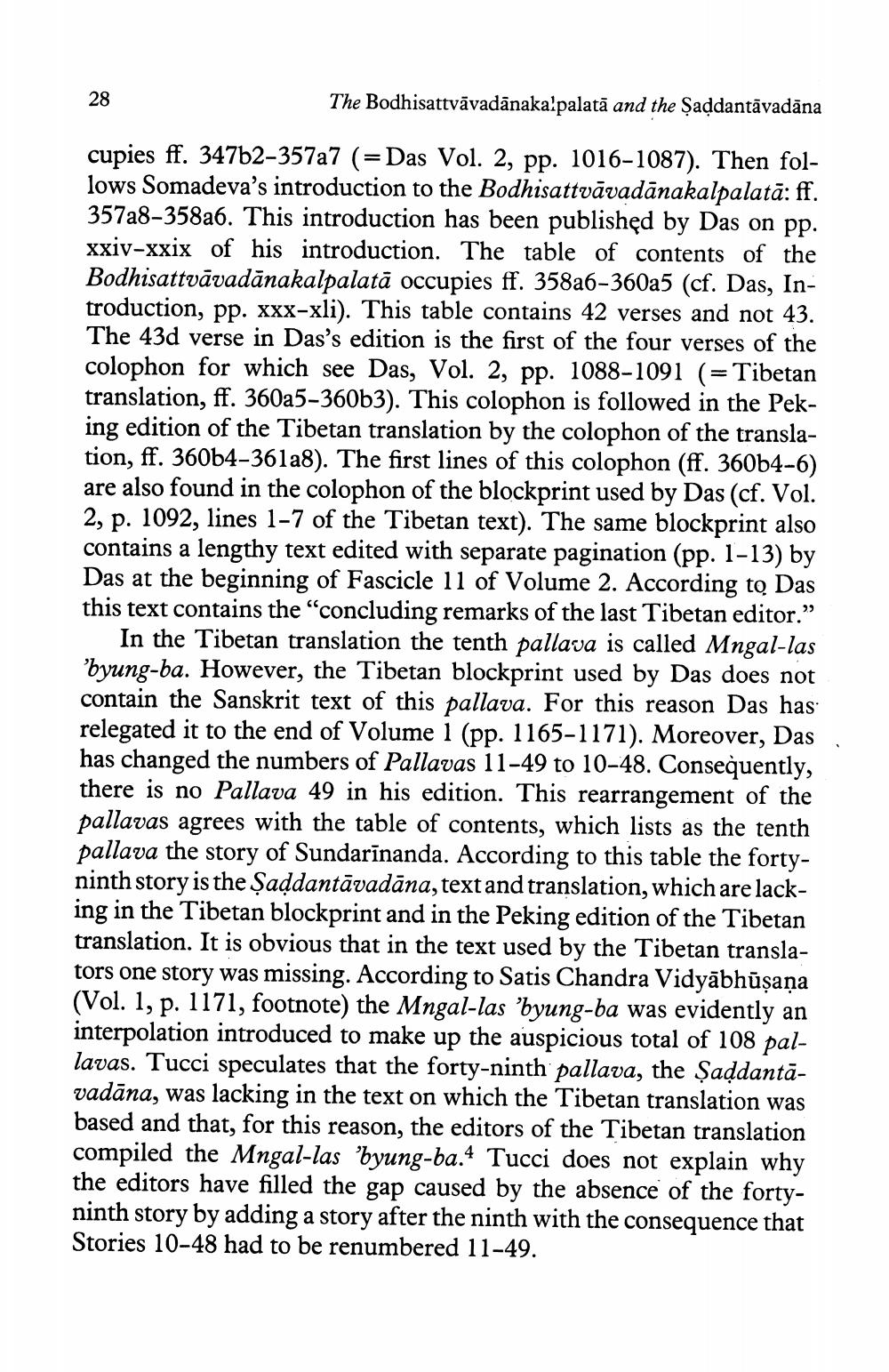Book Title: Bodhisattva Vadana Kalpalata And The Saddantavadana Author(s): J W De Jong Publisher: J W De Jong View full book textPage 2
________________ The Bodhisattvävadānaka!palatā and the Ṣaddantāvadāna cupies ff. 347b2-357a7 (= Das Vol. 2, pp. 1016-1087). Then follows Somadeva's introduction to the Bodhisattvāvadānakalpalatā: ff. 357a8-358a6. This introduction has been published by Das on pp. xxiv-xxix of his introduction. The table of contents of the Bodhisattvāvadānakalpalatā occupies ff. 358a6-360a5 (cf. Das, Introduction, pp. xxx-xli). This table contains 42 verses and not 43. The 43d verse in Das's edition is the first of the four verses of the colophon for which see Das, Vol. 2, pp. 1088-1091 (= Tibetan translation, ff. 360a5-360b3). This colophon is followed in the Peking edition of the Tibetan translation by the colophon of the translation, ff. 360b4-361a8). The first lines of this colophon (ff. 360b4-6) are also found in the colophon of the blockprint used by Das (cf. Vol. 2, p. 1092, lines 1-7 of the Tibetan text). The same blockprint also contains a lengthy text edited with separate pagination (pp. 1-13) by Das at the beginning of Fascicle 11 of Volume 2. According to Das this text contains the "concluding remarks of the last Tibetan editor." In the Tibetan translation the tenth pallava is called Mngal-las 'byung-ba. However, the Tibetan blockprint used by Das does not contain the Sanskrit text of this pallava. For this reason Das has relegated it to the end of Volume 1 (pp. 1165-1171). Moreover, Das has changed the numbers of Pallavas 11-49 to 10-48. Consequently, there is no Pallava 49 in his edition. This rearrangement of the pallavas agrees with the table of contents, which lists as the tenth pallava the story of Sundarīnanda. According to this table the fortyninth story is the Saddantāvadāna, text and translation, which are lacking in the Tibetan blockprint and in the Peking edition of the Tibetan translation. It is obvious that in the text used by the Tibetan translators one story was missing. According to Satis Chandra Vidyabhūṣaṇa (Vol. 1, p. 1171, footnote) the Mngal-las 'byung-ba was evidently an interpolation introduced to make up the auspicious total of 108 pallavas. Tucci speculates that the forty-ninth pallava, the Saddantăvadāna, was lacking in the text on which the Tibetan translation was based and that, for this reason, the editors of the Tibetan translation compiled the Mngal-las 'byung-ba. Tucci does not explain why the editors have filled the gap caused by the absence of the fortyninth story by adding a story after the ninth with the consequence that Stories 10-48 had to be renumbered 11-49. 28Page Navigation
1 2 3 4 5 6 7 8 9 10 11 12
